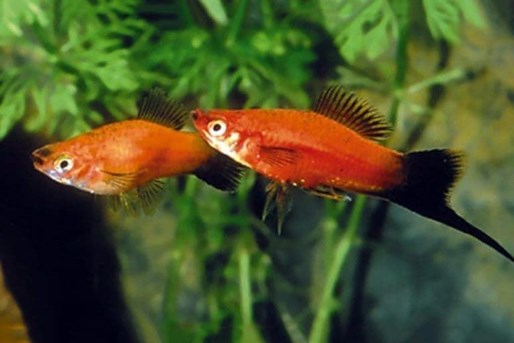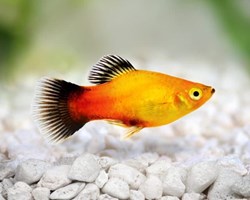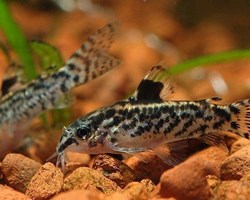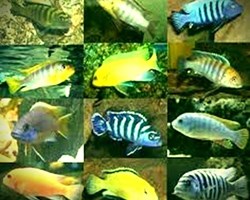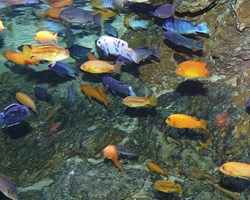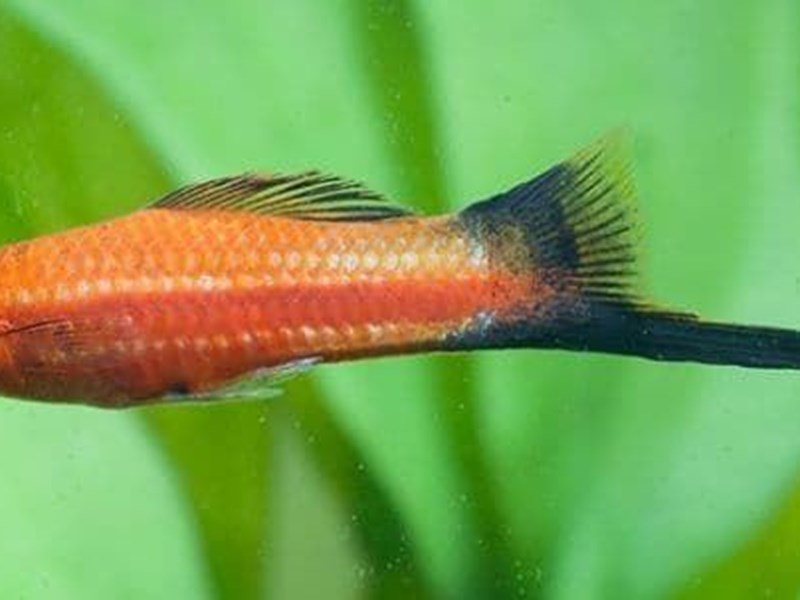
DESCRIPTION OF THE XIPHO FISH OR SWORD-TAILED FISH:
Scientific name: Xiphophorus Helleri.
Common name: Xipho, xifo or swordtail fish.
Aquarium size: 100 liters.
Temperament: Territorial.
Temperature: 18ºC to 28ºC.
pH: 7 to 8.
Diet: Omnivore.
Length: 10 to 15 cm.

The Xipho fish is popularly known as swordtail fish, or Xipho, this species is from the poeciliidae family, it is a tropical freshwater fish.
Originally from Central America, the countries in which they are most abundant are Mexico, Honduras, Belize and Guatemala.
In recent years it has become very popular in aquariums worldwide.
It is curious because the first Xiphos introduced in Europe at the beginning of the 19th century did not have such a highly developed sword, however, today we can choose from numerous variations, with very striking colors and veils.
The Xipho in its wild state has a grayish green color with a reddish stripe that runs through its entire body, this stripe can change color when it reaches the tail, there are Xipho fish of different colors we can find yellow, red and even albino.
The male Xipho is characterized by the fact that it is the one with the “sword tail”, a sword-shaped extension of the lower rays of its caudal fin.
Near the anal fin we can see the gonopodium, its reproductive organ.
They are fish with an elongated, robust body and their mouth points upwards to feed on the surface, males can measure up to 10 cm and females reach 15 cm.
The progress in breeding Xipho fish has achieved such strange varieties with larger fins or even with a double sword on its fin, it should be noted that their life expectancy can be up to 4 years if their living conditions are optimal.
Sex change of the swordtail fish: In the wild and in areas with a lack of males, sex changes can occur in this species, a female can become a fiery male, however, the reverse process is not documented.
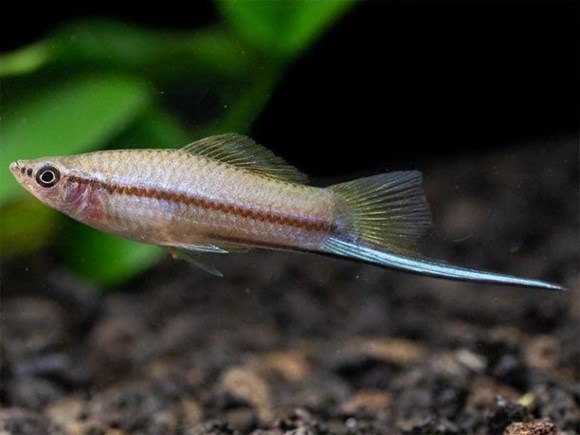
DISTRIBUTION AND HABITAT OF SWORDFISH:
It is common to find them swimming freely in streams and rivers with smooth and crystalline currents in Central America, from central Mexico through Guatemala, Belize to northwestern Honduras.
Currently it can be found anywhere in the world, as it is a fish that adapts quite quickly to ecosystems other than its own.
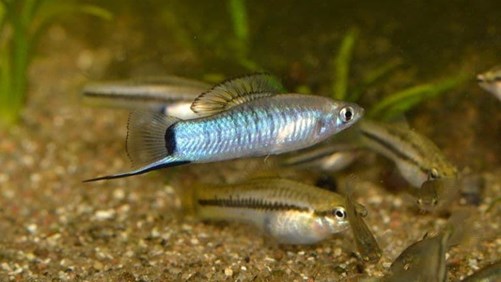
THE BEST AQUARIUM CONDITIONS FOR THE SWORDTAIL FISH:
Despite its small size, the Xipho fish does not grow very well in small aquariums, ideally it should be large, at least 100 liters and large enough.
These fish like to swim freely and take long runs.
So that you can understand, each Xipho requires at least 15 liters of aquarium just for him.
So that the females do not feel harassed, the ratio between females and males should be 3 females for each male.
As for oxygenation, this must be optimal, resorting if necessary to an air pump, the ideal conditions are:
- PH between 7 and 8 degrees.
- slightly alkaline water.
- The water temperature should be around 24º, with a variation between 18º and 28º.
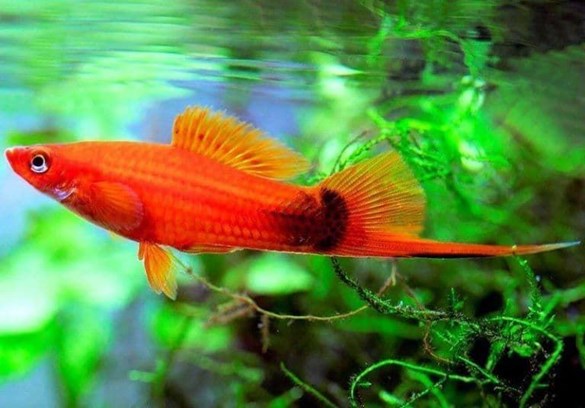
SWORDTAIL FISH NUTRITION:
The Xipho are omnivorous fish, the ideal is that their diet is based on mosquito larvae, tubifex and brine shrimp, you can alternate with spirulina algae, spinach, cooked peas and the common commercial flakes.
Some people feed them with pollen, this food provides a very strong protein base, a varied diet and not overfeeding will keep Xiphos healthy.

BEHAVIOR AND COMPATIBILITY OF THE SWORDTAIL FISH:
They are very active fish, which is why they need a large aquarium.
Generally they tend to ignore other fish, although males are usually very territorial, if there are 2 or more males in a group it is possible that one of them becomes a dominant male, in this way the other males are displaced and cannot reproduce, for this reason it is ideal that the proportion of females be higher and thus avoid these confrontations.
If the aquarium is small you should not have more than one male, although the ideal is that the aquarium is large enough since these fish feel comfortable forming a school.
They are usually located mostly in the middle and upper zone of the aquarium.
They coexist peacefully with other species of fish, among which it is worth highlighting:
Fish compatible with swordtail fish:
- Tiger Barb.
- Harlequin.
- Rasbora Galaxy.
- Corydoras.
- drunk.
- Ancistrus.
- Tetra Neon.
- Botia Clown.
- Ax Fish.
- Mollies.
- Bubble eyes.
- Platy.
- Boraras.
- Chinese neon.
- betta.
- Nun.
- Silver Dollar.
- Kribensis.
- Apple Snail.
- Cherry Barbel.
- Otocinclus.
- Guppy Endler.
- Eat Siamese algae.
- Pearl Gourami.
- Angel fish.
Fish compatible with restrictions:
- Rainbow.
- Koi carp.
- Wasp.
- Killis.
REPRODUCTION OF THE SWORDTAIL FISH:
The Xiphophorus Helleri is ovoviviparous, its reproduction is quite simple, this is one of the reasons why it is so popular in the aquarium hobby.
The male Xipho stretches and contracts his body and fins to court females, he can spend much of the day in this activity, until he stretches his gonopodium and launches a bag of sperm towards the female's belly.
The female Xipho fish fertilizes her eggs with this sperm to start the gestation of the fry, the pregnancy can last from 4 to 6 weeks, she will carry the eggs until hatching, which happens inside her to later give birth to fry , it should be noted that these little pups are self-sufficient from the first second of life.
During gestation, the female is usually located in a low area with abundant vegetation.
